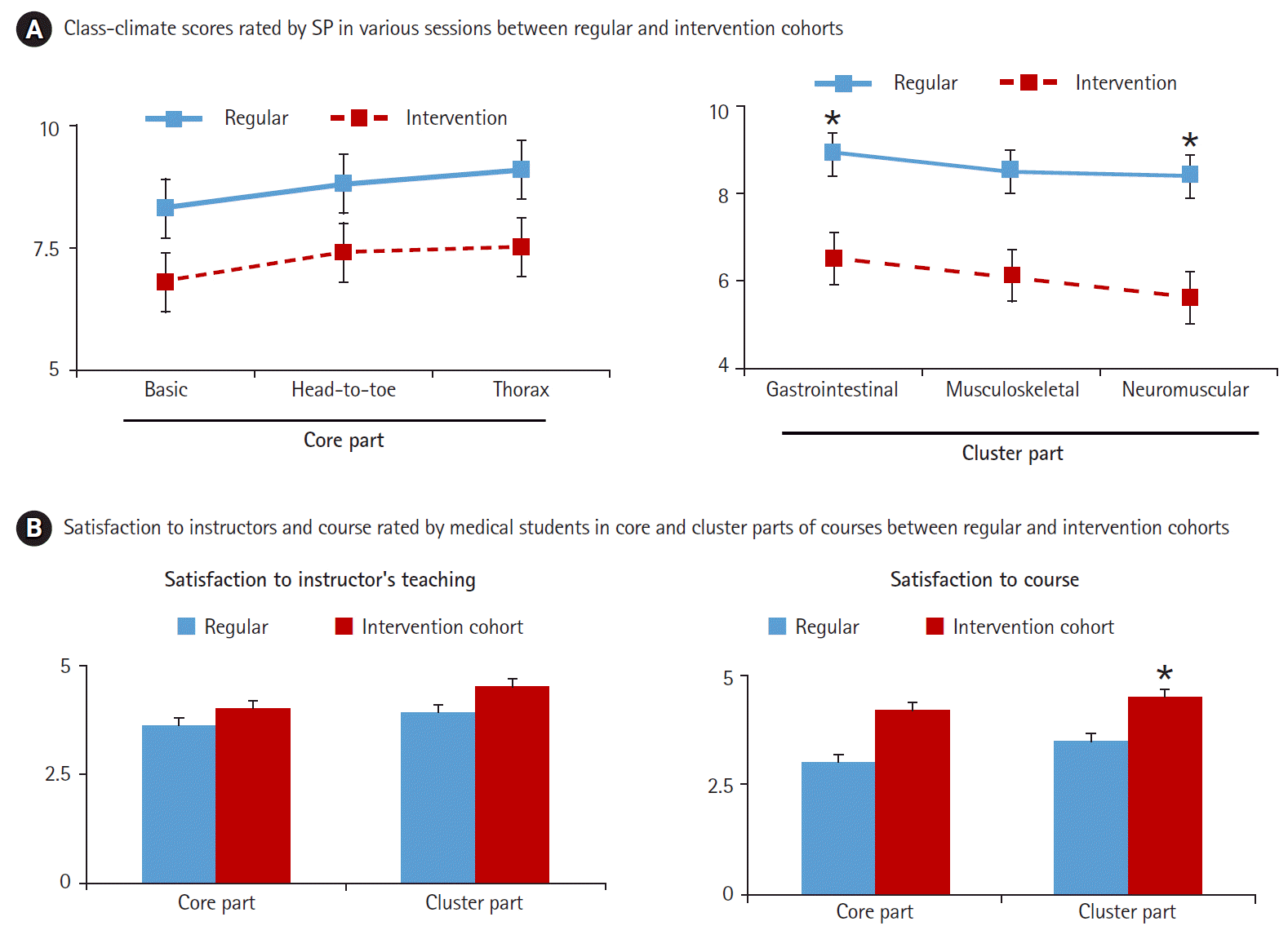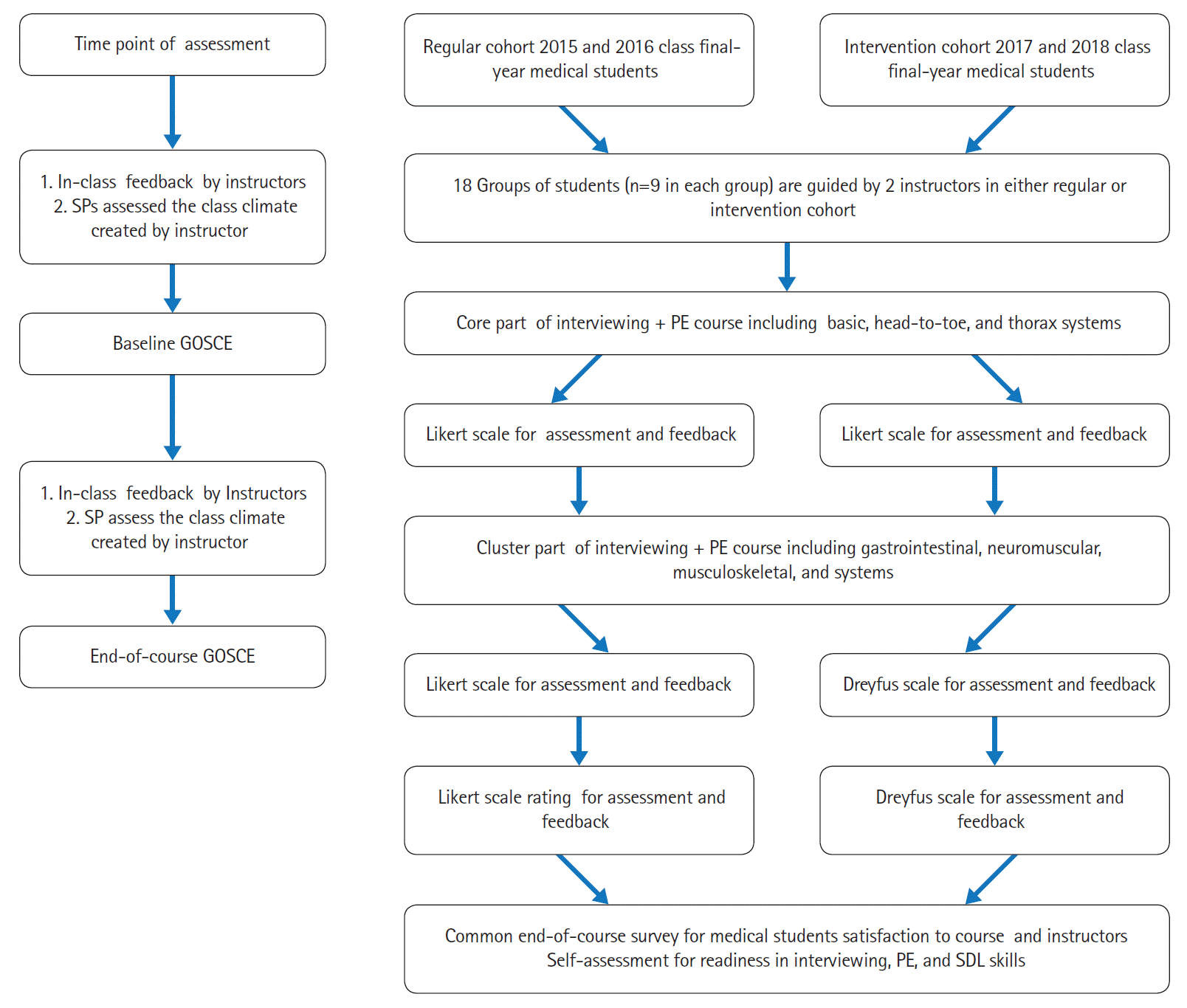Abstract
Purpose
Methods
Results
Conclusion
Notes
Authors’ contributions
Conceptualization: SSH, YYY, BS. Data curation: CCH, YYY, BS. Formal analysis: SJW, YYY. Funding acquisition: YYY, CCC. Methodology: YYY, CCH, SJW. Project administration: CCH, YYY, BS. Visualization: BS, YYY, CCH. Writing–original draft: SSH, YYY, BS, SJW. Writing–review & editing: SSH, CCH, YYY, SJW, CHC, BS.
Conflict of interest
No other potential conflicts of interest relevant to this article were reported.
Funding
This study was funded by the Ministry of Health and Welfare of the Taiwanese Government (107F-M01-0603, 107QC018-2) and Taiwan Association of Medical Education (TAME) (V107EA-008, V108EA-006).
Data availability
Data files are available from Harvard Dataverse: https://doi.org/10.7910/DVN/47WSRS
Dataset 1. BCS
Supplementary materials
References
Fig. 1.

Fig. 2.

Table 1.
Table 2.
GOSCE evaluation and feedback for practicing skills in interviewing and PE in the regular cohort. Rating on the Likert scale: 1=poor to 5=excellent for students’ performance. The scores were converted to percentages for comparison of the baseline GOSCE including interviewing and PE skills of the basic, head-to-toe, and thoracic systems with the end-of-course GOSCE focused on interviewing and PE skills of the gastrointestinal, musculoskeletal, and neuromuscular systems.
GOSCE, group objective structured clinical examination; PE, physical examination.
Table 3.
GOSCE evaluation and feedback for practicing skills in interviewing and PE in the intervention cohort. Performance on the Dreyfus scale: 1=new learners, 2=not yet competent, 3=competence, 4=proficiency, and 5=expert-level performance. The score was converted to a percentage for comparison.
GOSCE, group objective structured clinical examination; PE, physical examination.




 PDF
PDF Citation
Citation Print
Print




 XML Download
XML Download